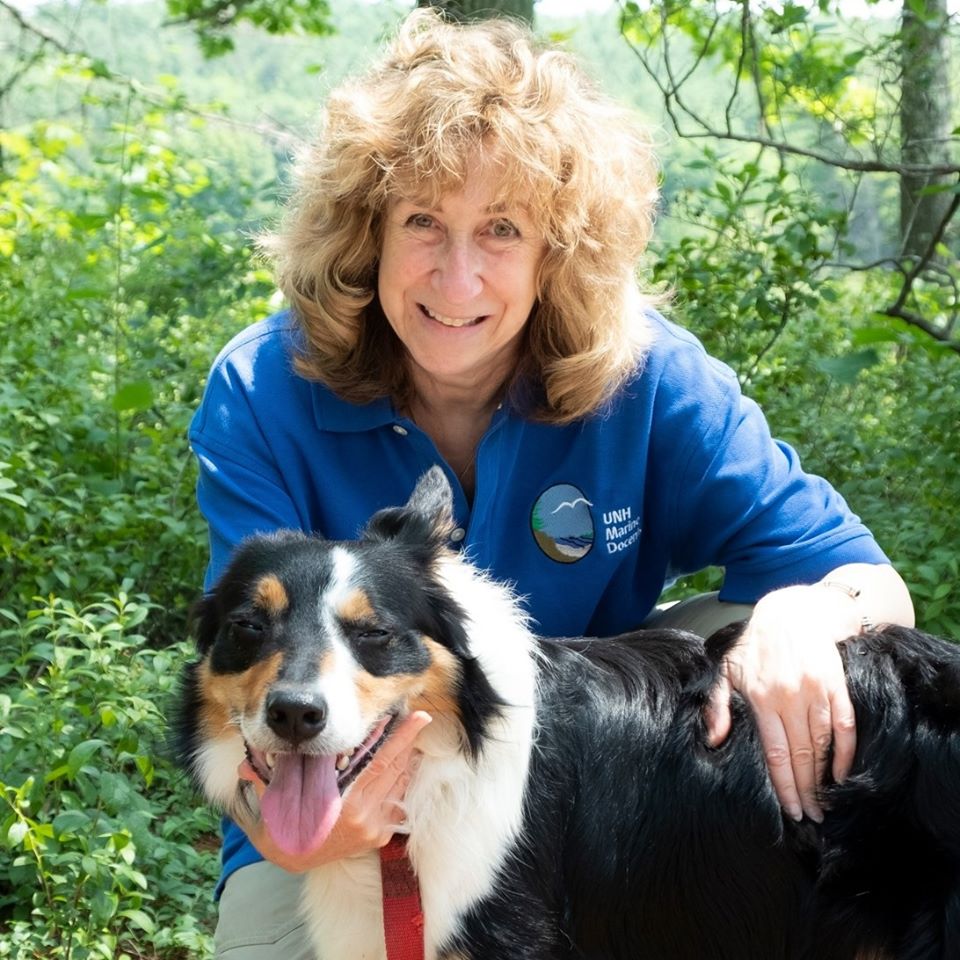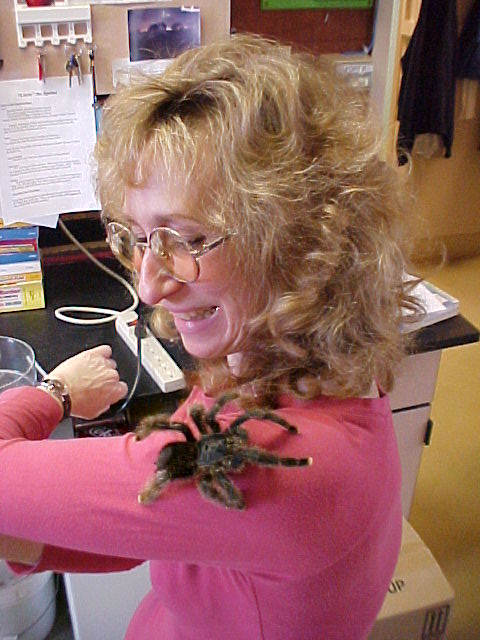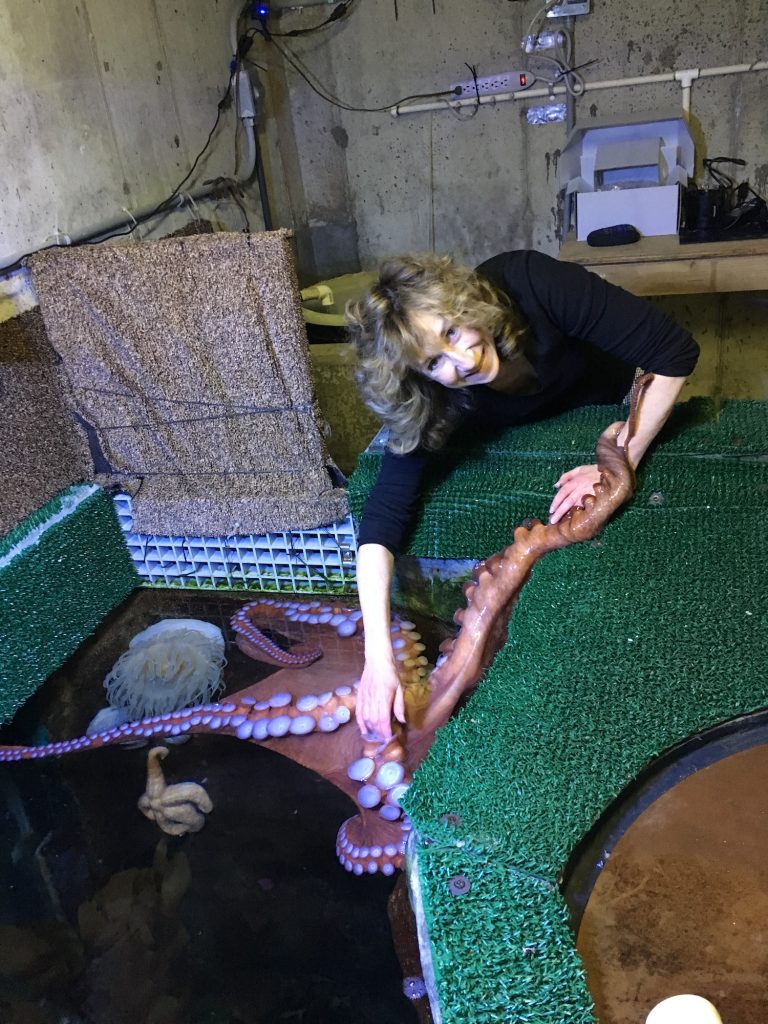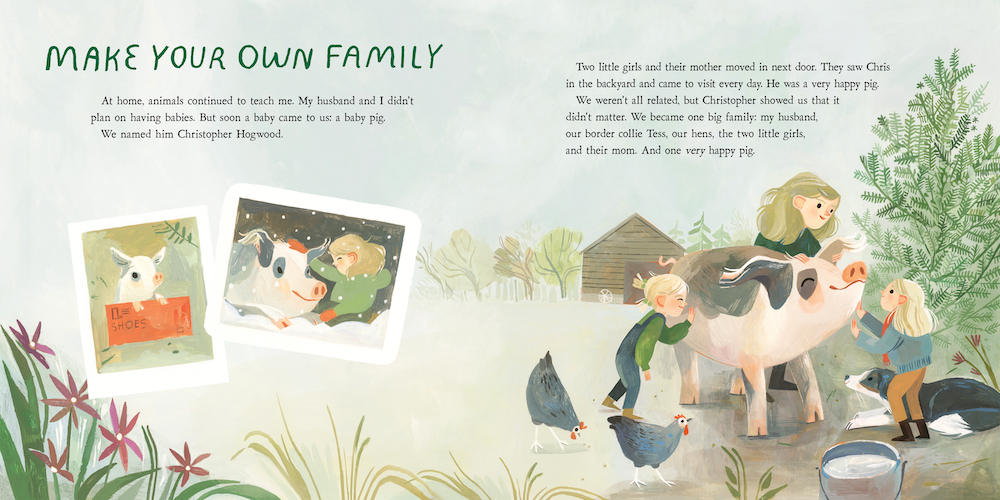TeachingBooks is delighted to welcome author Sy Montgomery as our featured guest blogger this month.
Each month, we ask distinguished authors or illustrators to write an original post that reveals insights about their process and craft. Enjoy!

Finding Teachers in the Most Unlikely Places
By Sy Montgomery
As COVID-19 forces many kids to miss school this fall, I have good news for them: teachers are all around us―and not just on the computer screen.
I met many of my best teachers far from any classroom. One of them was a wild mountain gorilla. Another was a great white shark. Others were hyenas, lions, tigers . . . even a big, fat pig.

Human teachers are essential, of course. I’m grateful to the classroom teachers from whom I learned math and spelling, history and geography, reading and writing, and so much more. But plenty of other teachers and mentors are here to help us. Some have scales. Some have feathers. Some have four legs, or six, or eight.
Animals can teach us some of our most important lessons. While I’ve been climbing mountains in African cloud forests, scuba diving in coral reefs in Mexico, or even spending time in barns and backyards, animals have shown me how to be a good creature.

I met my first teacher before I was old enough for nursery school. Her name was Molly. She was a Scottish terrier pup. Even though I was the older one chronologically, I recognized that she was far wiser. While I was still a relatively helpless child, she became an adult—finished, complete, and supremely competent.
Molly could do all sorts of things I could not: She could see in the dark. She could hear sounds above the threshold of human hearing and run as fast as a rabbit. She could smell a hidden world—one beyond my senses, but vividly real and wild and enticing. I followed Molly everywhere, watching her every move. I wanted to be just like her.
Molly died when I was in high school, but she lives on in my work every day. As I write this, her photo—her ears up, her eyes bright―sits on my desk. After all, she inspired my career. Molly is directly responsible for who I am and for the thousands of newspaper and magazine articles and more than thirty books on animals I’ve written for adults and children.
From Molly, I learned to look for other teachers and to recognize them when I see them. I learned how to listen for their truths. Three emus showed me the path to my destiny. Piranhas and electric eels helped teach me courage. Our pig, Christopher Hogwood, helped me build a loving family. A weasel taught me forgiveness.

I wrote about some of these lessons in How to Be a Good Creature: A Memoir in Thirteen Animals (Houghton Mifflin Harcourt 2018). At first, I didn’t want to write about myself. I had previously written about my life with Christopher in The Good Good Pig (Ballantine Books 2006), and I thought I was done with memoir. But one day my friend, the author Vicki Croke, came to our house with her partner, camerawoman Christen Goguen, to interview me. What, she asked, had a lifetime of studying animals taught me about how to live my own life? “How to be a good creature,” I answered. My editor at Houghton Mifflin Harcourt, Kate O’Sullivan, happened to see the video of that interview. The quote stuck with her. “That’s your next book,” Kate told me.
“When the student is ready,” the proverb goes, “the teacher will appear.” That was certainly the case for many of my animal teachers, who showed up at crucial times in my life. It has also proved uncannily true for the timing of these books, sharing the teachings of these individual animals with my readers.

The week How to Be a Good Creature was published, the Senate Judiciary Committee was conducting hearings over Brett Kavanaugh’s nomination to the Supreme Court. Amid angry allegations that the judge had sexually assaulted a high school student, Christine Blasey Ford—and countercharges that she, now a university professor, was a liar—Americans were hungry for examples of good creatures. They wanted to hear how a dog could change a little girl’s life, how tree kangaroos could stall a suicide, how an octopus could reach across half a billion years of evolution to befriend a person. The book became a bestseller. My editor then suggested that I write a version to share with younger readers. This time the book would have fewer words, more animals, and even more of illustrator Rebecca Green’s emotive, warm, and tender artwork showing people and animals happy together.

“School is not the only place to find a teacher,” begins our picture book Becoming a Good Creature (Houghton Mifflin Harcourt 2020). Little did we know when I wrote those words that by the time the book was published, a pandemic would leave so many classrooms closed across the world.
Nor could we have known that our political climate would grow ever more hateful and divisive. Never in my lifetime has our world longed more desperately for good creatures to teach us how to find our passions, build loving families, find forgiveness, heal our pain. Never before in my life have we needed mentors who could show us the path back to kindness and connection, compassion and hope.

Even amid the sickness and meanness of a broken world, animal teachers promise us hope. And that’s the message of both this new book and the memoir for adults. Both close as they begin: with a dog. But this new dog appeared when I was in my late fifties, at a time of great personal darkness in my life, a time when it seemed that everything I loved was ending.
This time, the student was not ready. But the teacher appeared anyway. Thurber, a baby border collie with one blind eye, arrived just in time to not only rescue me from despair, but to offer me the best lesson of all: to trust tomorrow. For, as Thurber showed me, at any moment a brilliant, joyous, life-affirming teacher may be waiting for you just around the corner.

Listen to the Meet-the-Author Recording for Becoming a Good Creature.
Watch the Meet-the-Author Movie with Sy Montgomery.
Hear Sy Montgomery’s Audio Name Pronunciation.
Text and images are courtesy of Sy Montgomery and may not be used without expressed written consent.

Leave a Reply